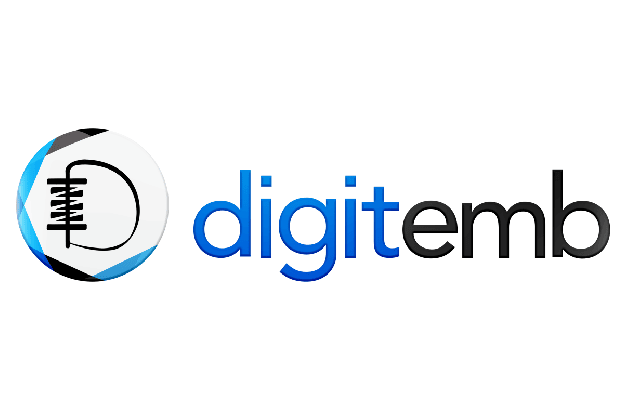Embroidery Digitizing Explained for Perfect Stitching
Embroidery digitizing is the specialized process by which artwork is converted into a digital format that embroidery machines can interpret and stitch. In this transformation, one critical step is the preparation of vector artwork: creating clean and accurate outlines so machines can follow them precisely. For many designers and apparel brands, converting their original designs into what are known as vectorized images ensures clarity and sharpness in the final embroidered piece, enabling the machine to record stitch paths with precision and minimal distortion.
What is Embroidery Digitizing?
Embroidery digitizing involves translating a visual design into a file format that an embroidery machine can execute. Instead of simply printing an image, the needle moves in defined paths to deposit thread and build texture. Through this process, the digital file encodes details such as stitch type, stitch direction, underlay layers, density and pull compensation. The digitizer must consider fabric type, hoop size, thread weight and the final application in order to ensure a successful outcome.
The Role of Artwork Preparation
Before the digitizing begins, the initial artwork must be prepared and cleaned up. That means removing stray elements, ensuring clear edges, flattening transparent layers, and converting text to outlines when necessary. The art must be scaled correctly and simplified where appropriate. A well-prepared design saves time, reduces errors, and improves the final embroidery’s appearance.
Choosing the Right File Format
Digitizers work with formats such as AI (Adobe Illustrator), EPS, or PDF. These allow for easy editing and scaling without losing clarity. Raster formats (like JPG or PNG) may sometimes be used, but require additional work to trace outlines and remove noise. Designers seeking precision prefer the vector formats since they maintain edge definition at any size, which translates well in stitch planning.
How the Digitizing Process Works
Once artwork is ready, the digitizing operator imports the file into specialized software. At this point, they set up hoop size, fabric type, thread colors and machine information. They then define stitch types and paths.
Step-by-Step Workflow
-
Set up hoop size and fabric type. The fabric dictates how tight or loose stitch density must be and how much compensation is required.
-
Clean the art if needed, and import into digitizing software.
-
Define color stops and assign thread shades.
-
Plan underlay stitches that stabilize the fabric and prevent puckering.
-
Create fill stitches (tatami or satin) and specify stitch directions for texture.
-
Add edge stitches and borders to defines shapes.
-
Apply pull compensation to account for thread tension and fabric movement.
-
Conduct a simulation and adjustments for travel stitches, jumps, trims and trims shorten.
-
Export into machine format such as DST or EMB and test in the embroidery machine if possible.
Understanding Stitch Types
Different stitch types are used depending on the design. Satin stitches are ideal for borders and text because they provide smooth edges. Tatami or fill stitches are used for larger areas of color and texture. Running stitches are useful for fine details or outlines. Each type requires specific attention to stitch length, pull, density and direction to achieve a crisp result.
Why Choose a Professional Digitizing Service?
For apparel brands, promotional products companies and embroidery studios, working with a professional digitizing service makes a major difference. Expert digitizers understand how to optimize files for machine performance and fabric behavior. They anticipate common problems such as fabric stretch, hoop distortions, thread breakage and excessive trims.
Benefits of Outsourcing
-
Faster turnaround times when handled by trained operators
-
Better compatibility with multiple machine brands and platforms
-
Higher success rates on first run, reducing wasted samples and materials
-
Greater consistency across multiple colorways and sizes
What to Look for in a Service
When selecting a digitizing partner, review factors such as minimum artwork requirements, preview stitch-out samples, revision policy and format compatibility. Also check whether the service offers free storage of your files, revision history tracking and support for embroidery stop/start codes.
Common Challenges in Digitizing
While straightforward in concept, digitizing involves many variables. One major challenge is dealing with fabric distortion during hooping. Stretchy or loosely woven fabrics may pull stitches and cause puckering. Digitizers must incorporate stabilizers and adjust underlay and pull compensation to mitigate this.
Small Text and Fine Details
Small text or fine line work often poses problems because the stitches can bunch up or dissolve. To address this, digitizers may convert text to a strong block font, use satin stitches with minimal width or employ running stitches with variable density. Where detail is insufficient, simplifying the design or increasing size may be the better path.
Color Transitions and Gradients
Embroidery cannot reproduce photographic gradients directly. Instead, digitizers approximate tonal shifts using stitch directions, density variations and subtle thread color changes. The result is a stylized effect rather than a direct photographic match. It takes experience to balance realism and stitch-ability.
Best Practices for Designers and Brands
If you are a designer or brand working with embroidery, following best practices helps ensure successful output. Provide clean, scalable artwork, specify exact thread colors, and communicate fabric type, placement and final size. Request sample runs and review stitch-outs under actual lighting conditions. Maintain an organised file-library of digitized versions for consistency across runs.
File Management Tips
Keep your master artwork at full resolution and store versions for different placements (left chest, full back, sleeve) separately. Label files clearly with size, thread count and format. Backup the machine files and maintain revision logs when updates are made. Good records simplify re-orders and reduce turn-around.
Working with Your Embroidery Partner
Clear communication between the brand, designer and digitizer streamlines the process. Share context: what the design means, how it will be used and any brand guidelines (fonts, colors, margins). If your design includes unusual materials (soldier’s uniforms, mesh caps) disclose this up front. Provide feedback from test runs and approve final stitched proofs before full production.
About Tahseen Islam
Tahseen Islam is a forward-thinking entrepreneur and the Co-Founder and CEO of DigitEMB, a global leader in embroidery digitizing, vector art, and custom patch solutions. With deep expertise in digital optimization, e-commerce strategy, and creative branding, he has helped thousands of businesses enhance their visual identity and product quality. His innovative mindset, customer-focused approach, and commitment to excellence continue to shape the future of modern embroidery and digital design services.
Quality Control and Production Readiness
Before full production begins, conduct a test stitch-out on the exact garment or fabric and run it through the same machine as the full run. Inspect stitch density, thread breaks, puckering, and backing show-through. Make adjustments in the digitising file if needed. Once approved, the final file becomes your production master.
Re-orders and Scaling Up
When scaling up, keep the digitised file intact; do not request re-digitizing unless the size or placement changes significantly. For example, moving from a 4-inch chest logo to a 10-inch back patch requires size-specific adjustments to density and pull compensation. Maintaining the same digitised master ensures consistent visual appearance across all garments.
Wrapping Up
The process of embroidery digitizing explained above showcases the technical and creative interplay between design, software and machine. By providing well-prepared artwork, collaborating effectively with your digitizing partner and adhering to best practices throughout production, you position your project for success. When you start with high-quality artwork and treat your file as the blueprint for stitching, you ensure that the final execution matches the vision. Whether you are producing custom patches, branded apparel, or promotional garments, understanding the digitizing workflow ensures your outcome is crisp, durable and brand-aligned. And by converting your original design into proper vectorized images, you give your embroidery operator the precision they need to deliver the highest quality output.













